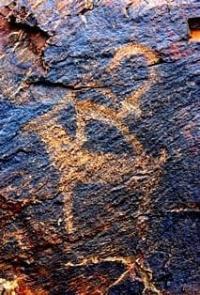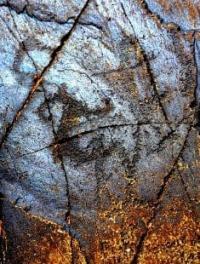You are here
Sacred Petroglyphs of Akkaynar.


Photo tours on rock paintings of Kazakhstan.
“If someone, without asking us, destined our destinies,
What did he attribute his evil and good to us with you?
After all, yesterday was without us, as tomorrow will be without us.
On what accounts did he count all the evil for you?”
Omar Khayyam.
Archeology and petroglyphs of Kazakhstan.
Akkainar petroglyphs are located at an altitude of 880 meters above sea level, located in the Akkainarsay tract, in the southern part of the Zhartas mountains, in the Chu-Ili mountains, 14 kilometers northwest of the Gorny village, 10.2 kilometers north and slightly east from the village of Matibulak, 11.1 kilometers northeast of the village of Gvardeisky in the Zhambyl region, in the western part of the Almaty region. The petroglyphs date back to the Bronze Age, Early Iron Age and Turkic times.
The object got its name from the name of the spring with clean water, which is located in the eastern part of the Zhartas mountains. Akkainar's drawings cover an area of several tens of kilometers. A large number of ancient settlements and burial grounds of the Bronze Age and the Early Iron Age have been recorded here.
None of the monuments of rock art, except for Tamgaly, contains such diverse information about the worldview and mythological ideas of the population, as in the Akkainar tract, since it is one of the most ancient in Zhetysu.
he sacred nature of petroglyphs is confirmed by a significant number of cult plots: images of solar characters; the wolf and the bull, whose cult already existed in the Bronze Age; images depicting phallic and fertility cults.
The most significant are the images of a bull, on the horns of which are depicted dancing people, hunters in wolf masks, sun-headed characters and other cult scenes. This indicates that the petroglyphs of Akkainar for several millennia represented a sacred zone for the ancient population of Zhetysu.
The monument was opened in 2008 by the expedition of the Institute of Archeology. A. Margulan under the direction of A.N. Maryashev. Most of the petroglyphs were made during the Bronze Age in the IInd millennium BC.
Rare petroglyphs of large sizes have been preserved on the rocky outcrops along the banks of the dried-up stream. A significant part of the drawings are figures of wild animals. They are distinguished by careful embossing and a peculiar ornament: dots and stripes are applied on the body of the animals.
In some figures, the horns are closed in a ring or in an open ring. Sometimes rings or solar symbols are visible on the horns of bulls. Among them, it is worth highlighting the figures of bulls with long horns, sometimes they have an ornament in the form of vertical stripes along the body.
One of the images, carved in the upper part of a hard-to-reach rock, is more than three meters in size and has two pairs of horns. At the end of the long ones there are figures of four people - the souls of the dead. Drawings with figures of people with disks on their heads can be considered unique.
These are "moon-headed" or "solar" characters. No less interesting are the images of people with wolf masks on their heads. There are quite a lot of images of wild horses, goats, etc. here. There are few drawings with camels.
Perhaps, in some cases, kulans are depicted. According to experts, among the bones collected at the settlements during excavations, the percentage of kulan bones is significant. Many figures have been refurbished - they differ in the color of the patina. Updates were made at different times.
Geographical coordinates of Ak-Kainar rock paintings (1): N43°37'58.50" E75°16'55.50"
Geographical coordinates of Ak-Kainar rock paintings (2): N43°38'19.52" E75°19'37.10"





Authority:
Zheleznyakov B.A. The reserve-museum "Tanbaly", p. Kargaly, Almaty region “History and Archeology of Semirechye”, Almaty, 2017.
Photos by
Alexander Petrov.







